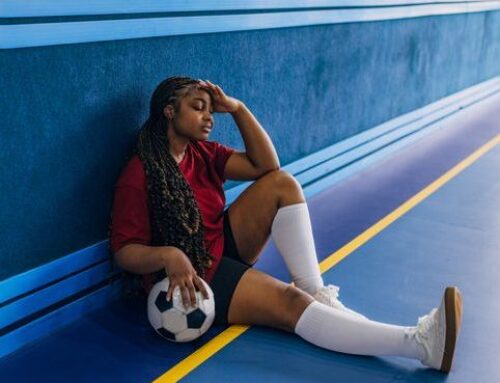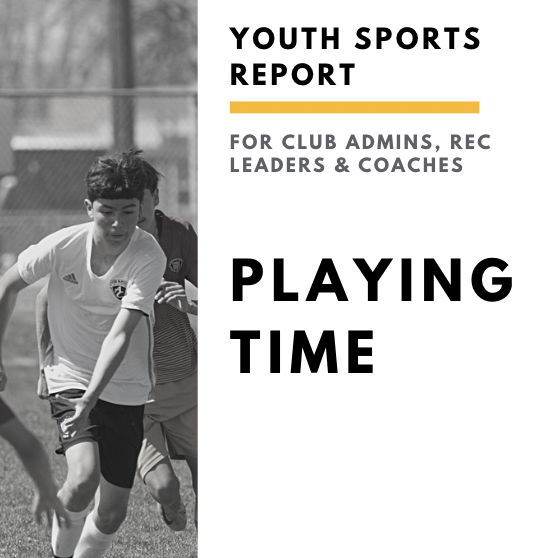Get our exclusive report. Download the iSport360 Club Switching Report Here – For Club Admins, Rec Leaders and Coaches.
Report: Youth Sports and Club Switching
We asked thousands of our subscribers a basic question. Why do youth sports athletes leave their travel club or sports program? Why is there club switching? Based on the Aspen Institute – Project Play and research out of the Michigan Youth Sport Institute on participation motivation and attrition, kids quit playing sports by age 11 years. There are many relevant factors of consideration but the biggest reason kids report for ending participation in sports is that isn’t fun anymore.
That number/age and other significant reasons center around cost to participate, inequities in opportunities, and lack of interest or “other things to do”. Some say these reasons create a ripple effect from the potential decrease in youth sport participation leading to a high rate of obesity in kids as they turn to activities that are less physical and more sedentary.
But we wanted to know why kids move around from one team to another – like job hopping minus that this isn’t a paying job. To clubs, what is the downside when players move on? And is there a downside? Or do clubs really care at the end of the day?
We asked our readers:
- How long do athletes stay with the same travel club?
- How many clubs will you play for during your career?
- What are the top reasons you leave a club?
- What are the top reasons you stay with a club?
Overview:
Club switching, some of the results were not too surprising: 3 of the 5 reasons that players leave a club were (1) due to the coach, (2) not enough playing time and (3) the team was not being competitive.
Other results, were surprising: 2 of the 5 top reasons focused on communication and player development. 46% said there was a lack of communication and feedback from the coach or club.
The other relevant result was about player development. 45% of respondents indicated that they left a club due to lack of player development.
How long do players stay with their club?
Over 41% said that they will stay with their club for 3 or more years. While 59% said they will stay with their club for less than 3 years.
This 3-year demarcation could be an indicator that players are only involved in travel club sports on average of 3 years. interestingly, less than 1% said they would stay at their club for less than a year.
How many clubs does a player play for in one sport?
43% stated that their player would play for 3 different clubs during their youth sports career. With 32% stating that they would play for 2 clubs. Now this can mean different things to different individuals and can be based on different sports (e.g., soccer v. volleyball). Players can start out their career in a town-based recreation program then move up to a more competitive travel club program leading to requisite club changing. And, different sports have varied systems of transitions across levels and club competitiveness. The competitiveness of the team emerged asa factor and one of the top reasons players and families reported moving to another travel sports club.
Top Reasons Players Leave a Club
Overwhelmingly, 60% of the respondents said that they left a club because they didn’t like the coach. While 52% said they left due to lack of playing time. And, 46% left due to the team not being competitive enough. Although there is little empirical evidence/research on these factors, we have all heard ample anecdotes about players not liking the coach or not getting enough playing time. It is one of the biggest complaints by parents across any sport and at any level.
When taking our survey, respondents had multiple options to pick from and could choose as many options as possible. Here’s more of what our survey results revealed:
Top Reasons Players Stay with a Club
On the flip side, we asked respondents (and they could pick more than 1 option) why they stayed with a club. 81% of the respondents said they stayed with their team because of their coach. We all know that a good, caring coach matters and this stat speaks volumes to that end.
Likely, a more surprising reason an athlete and their family stay with a club is the level of player development. Player development is very important and there are many facets of player development that contribute to why players and families stay with a club.
Over 79% of respondents stated they stayed with a club when there is a focus on player development. Player development means different things to different athletes and families. We captured some of those reasons below.
Player feedback
Player feedback should be on-going. Players should know what they do well and what they need to work on. iSport360 provides ways that coaches can provide player feedback and also share video practice assignments. This allows players to further develop their skills.
Player evaluations
Player evaluations are more formal and provide a time stamp usually at the beginning, middle and end of season. While it is work for coaches and admins, it provides a great path for the player to develop over time, iSport360 has a player evaluation tool that provides ratings on key metrics that were developed by the governing body of each of our nine sports.
Communication
Players should have a way to access and opportunity to communicate with coaches regularly. But this requires coaches to ensure that digital communication is safe for all. Have players join the iSport360 Virtual Locker Room [register mark] which allows coaches and teams to communicate with each, share sticker rewards and build a long lasting culture of support and positivity.
Summary
Youth sports are a valuable opportunity that can help young athletes develop their physical skill, as well as stay socially and emotionally strong. Sport participation has the potential toprovide many life lessons like time management, working as a team and learning like hard work and persistence. The most important thing is to provide a safe and supportive environment with a caring coach that focuses on developing the player and team.
We know that our respondents ranked player development and communication as high and important categories when deciding on whether to stay, or leave, a sports club. Remember that an athlete’s journey consists of more than 1 practice, 1 tourney or 1 game; it is about the long term enjoyment of the game and the benefits of playing a sport over time.
What do you think? We would love to hear from you.
For more information on the survey results and to access the info-graph from iSport360, please click here.
We would like to thank Dr. Megan Babkes Stellino, Professor of Social Psychology of Sport and Physical Activity at the University of Northern Colorado for collaborating with iSport360 on this post.
Learn more or request a demo of our youth sports software that is helping teams improve communication, organization and player development.
May 3, 2024






